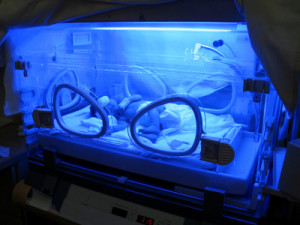 Contrary to popular belief, cerebral palsy is not a single medical disorder. Cerebral palsy is an umbrella term that doctors use to describe a variety of neurological abnormalities. These neurological abnormalities affect posture and movement. Furthermore, these motion disorders can be accompanied by problems with communication, cognition, sensation, and behavior. Many medical organizations are still working to identify a more specific definition of the term “cerebral palsy.”
Contrary to popular belief, cerebral palsy is not a single medical disorder. Cerebral palsy is an umbrella term that doctors use to describe a variety of neurological abnormalities. These neurological abnormalities affect posture and movement. Furthermore, these motion disorders can be accompanied by problems with communication, cognition, sensation, and behavior. Many medical organizations are still working to identify a more specific definition of the term “cerebral palsy.”
Causes of Cerebral Palsy
Prenatal causes of cerebral palsy may involve:
- Multiple gestation, such as twins or triplets
- Thyroid problems within the mother
- Iodine deficiencies within the mother
- Methylmercury exposure to the mother while she is carrying the child
- Epilepsy or other seizure complications within the mother
Types of Cerebral Palsy
While the broad definition of cerebral palsy is useful in some ways, it is frequently more beneficial to discuss the specific types of cerebral palsy. The most common method that physicians use to classify cerebral palsy is manner in which the child appears in motion and at rest. These observations can help identify the type of cerebral palsy, although they may not necessarily aid in identifying the severity of cerebral palsy.
Spastic Cerebral Palsy
Spastic cerebral palsy is also called pyramidal cerebral palsy. This type of cerebral palsy is the result of brain damage that may occur before, during, or up to two years of childbirth. Premature birth, low birth weight, chemical exposures, jaundice, seizures, and labor complications may all cause spastic cerebral palsy.
A child with spastic cerebral palsy has very stiff muscles and increased muscle tone. This makes it difficult for the child to move. In addition, a child with spastic cerebral palsy may have very robust reflexes. When a muscle is activated while a doctor is checking the child’s reflexes, the child’s muscle fibers may activate multiple times. This is known as clonus.
Dyskinetic Cerebral Palsy
Children with dyskinetic cerebral palsy will experience disordered movement. The child will have repeated involuntary motions that can affect multiple limbs as the same time. Dyskinetic cerebral palsy may also affect the muscles of the child’s face.
Dyskinetic cerebral palsy is also known as extrapyramidal cerebral palsy. This type of cerebral palsy is occasionally divided into more specific categories, including ataxic cerebral palsy and choreoathetoid cerebral palsy. Ataxic cerebral palsy involves a lack of movement or paralysis, while choreoathetoid cerebral palsy involves sudden, irregular, and dancelike motions.
Cerebral Palsy Classifications
Cerebral palsy may be classified into four basic types by the affected location of the body in the following manner:
- Monoplegia. Only affects one limb in the patient’s entire body.
- Hemiplegia. Only affects one side of the patient’s body, which commonly involves upper limbs more so than lower limbs.
- Diplegia. Only affects the upper or lower half of the patient’s body and is most frequently seen in the lower limbs of cerebral palsy patients.
- Quadriplegia. All four limbs of the patient’s body are affected, including the patient’s midsection.
Gross Motor Function Classification System
In 1997, the CanChild Centre for Childhood Disability Research of McMaster University first developed the Gross Motor Function Classification System (GMFCS). The goal of the Gross Motor Function Classification System was to employ a universal method of severity classification for the various levels of cerebral palsy. With a more universal cerebral palsy classification system in place, cerebral palsy studies would be more effective. Despite the benefits of the GMFCS, many medical professionals still use the classification system that they feel will benefit their personal and professional goals the most.
Limitations of Cerebral Palsy Classification Systems
The broad definition of cerebral palsy can make it an exceptionally difficult medical condition to conduct research on. For more effective treatment in the future, it is important to be able to identify similarities among patients. This will allow for comparison between cerebral palsy treatments, along with a closer connection between symptoms and effective medications. Numerous groups have attempted to resolve the issue of cerebral palsy classification; however, none have successfully implemented a universally-accepted classification system. If your loved one has been diagnosed with Cerebral Palsy, please contact our Orlando Cerebral Palsy lawyers today.
Sources:
“NINDS Cerebral Palsy Information Page.” National Institute of Neurological Disorders and Stroke. NINDS, n.d. Web. 24 Sep 2013. <http://www.ninds.nih.gov/disorders/cerebral_palsy/cerebral_palsy.htm>.
Palisano, Robert, Peter Rosenbaum, and et al. “Gross Motor Function Classification System for Cerebral Palsy.” CanChild Centre for Childhood Disability Research. McMaster University, n.d. Web. 24 Sep 2013. <http://www.motorgrowth.canchild.ca/en/GMFCS/resources/GMFCS_English.pdf>.
